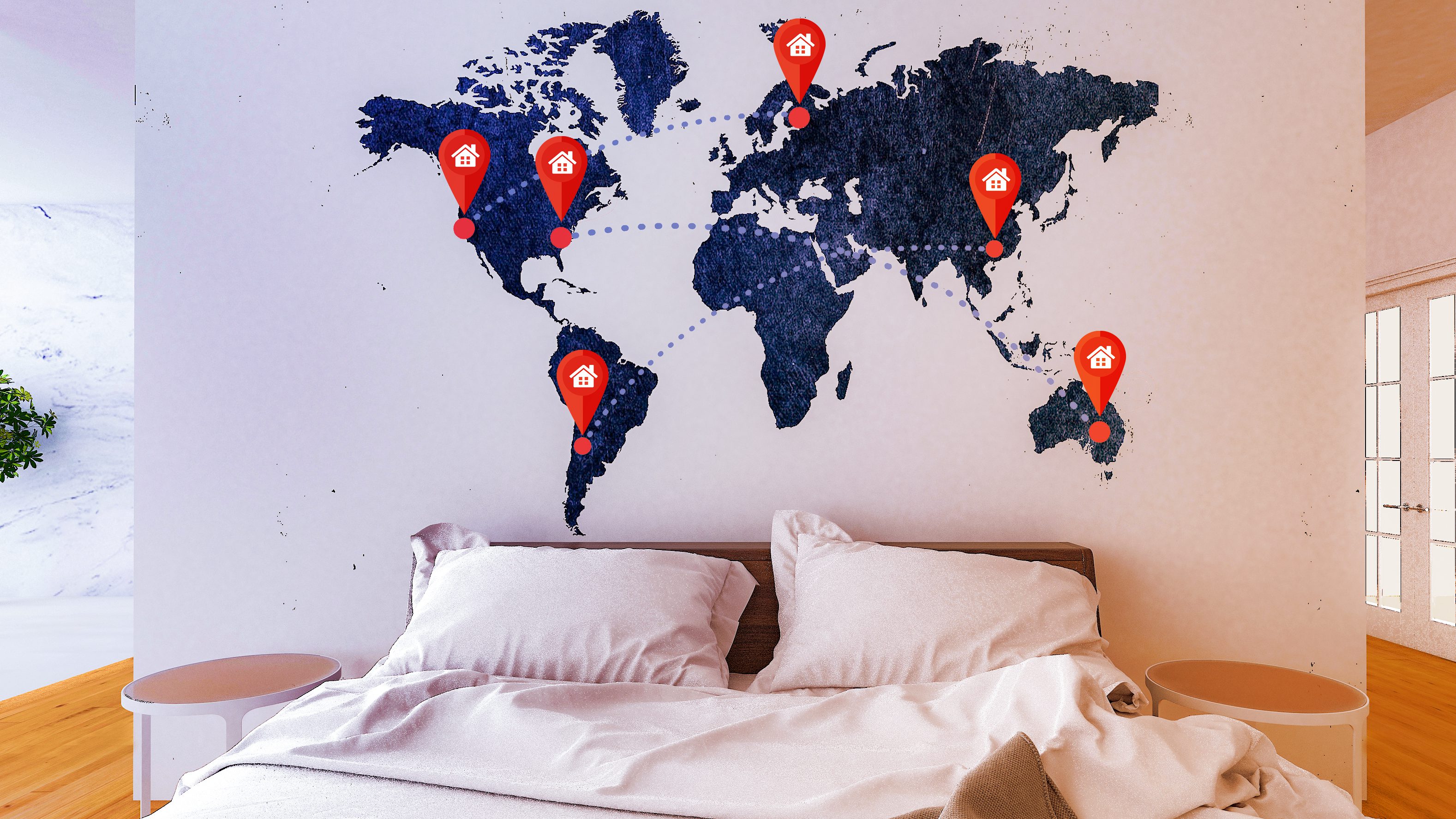
iStock; realtor.com
Vacations are supposed to be relaxing. But by the time you’ve booked your travel, found the perfect place to stay, and then forked over a small fortune for that fancy hotel or Airbnb stay, the getaway has become more stressful than it would have been to just stay home.
That’s why more people are turning to home swapping. Again.
The practice of home swaps began in earnest back in the 1950s. But now it’s been given a new, gig-economy-type makeover, making it easier then ever for wanderlust-ridden folks to pull off. Over the last decade, a slew of home-swapping websites, like GuestToGuest and Love Home Swap, have cropped up. These sites allow travelers from all over the world to connect and arrange stays in fully furnished homes, in some cases equipped with gourmet kitchens, pets and even a car—without exchanging a cent (most sites charge an annual fee). That’s the premise of more than 70 home exchange websites, which allow homeowners (and renters, with permission from their landlords) to trade their homes for days, weeks, even months at a time.
The only catch: Participants must allow strangers to vacation in their own residences. Are free accommodations in far-flung locales worth a stranger sleeping in your bed, soaking in your tub or thumbing through whatever you haven’t locked away? For some thrifty folks, the answer is a resounding yes.
The practice has allowed retired social worker Gerri Molettiere to live abroad for free, doing 20 exchanges in nine countries since 2010 in Spain, Costa Rica, Iceland, and Ireland through HomeExchange.com. The site charges a $150 annual fee.
Listing a home for swap is a lot like listing a home for sale: You post pictures of your place on an exchange website, along with some info about your home and yourself. Then you browse other homes and correspond with their owners to negotiate swap dates and details.
Trades might be simultaneous, where each participant swaps homes for the same period, or delayed, with one set living with the other as guests in a spare room or guest house. Some sites, such as GuestToGuest, allow swappers to exchange points instead of visits in their homes. Members earn points for hosting travelers and can use them when they stay in someone else’s home.
To many, it’s a more immersive way to experience a new place.
“I like being in a house because you slow down your pace,” says Molettiere, 67. “You take your time and enjoy where you are.”
 Gerri Molettiere swaps her Colorado home for accommodations all over the world.
Gerri Molettiere swaps her Colorado home for accommodations all over the world.
The oldest of the swapping companies, HomeLink USA and Intervac, were founded in 1953, long before the internet. Back then, members would have to browse catalogs of homes and write actual letters (sent through the post office!) to arrange exchanges. The web, obviously, simplified the process.
GuestToGuest, founded in 2011, is now the largest platform, boasting a network of more than 413,000 homes in 187 countries. It purchased its biggest competitor, HomeExchange, which has more than 65,000 listings in 150 countries, last year. (The sites are still run separately.)
But size isn’t everything in home swapping—and specialty sites abound. Some are tailored for those in certain professions, such as airline employees (Airline House Exchange) or teachers (Teacher Home Swap). Others have age or religious restrictions. And then there are sites for folks seeking homes near ski resorts (IVHE.com), or in certain countries.
Would you let a stranger sleep in your bed?Syd and Joie Galloway
But while the new online process may require less effort, there’s an old-fashioned stumbling block to home-swapping for many folks: the fact that a total stranger will be using their space while they’re not around.
But unlike Airbnb or other pay-to-stay websites, the people signing up for exchanges have some skin in the game—namely, their homes and possessions.
“The only way to participate in this is to offer your own home to other people, and so it tends to attract a very honest, respectful clientele,” says home swapper Andrew Rich, 60, of San Francisco. Most sites offer insurance, and can also arbitrate disputes.
Then there’s the fear that swaps will fall apart—perhaps at the last minute.
Syd and Joie Galloway, a Washington, DC-based couple in their 70s, estimate they’ve done more than 140 home swaps over 30-plus years, and only once did an exchange fall through. They called their swap partner shortly before their scheduled trip to Hawaii, and found out that her husband had just died. The Galloways contacted HomeLink, the swap service they were using.
“In no time, at all they found us another host and exchange in Oahu, HI. … We ended up exchanging with that family four times,” says Syd Galloway.
But while people have relatives to visit and weddings and conferences to attend all over, the reality is that those living in big cities or hot vacation destinations are more easily able to arrange swaps.
“I could live in France for the next year if I wanted to, because so many people there want to stay at my house,” says Betsy Hicks, a self-employed 52-year-old with a centrally located, two-bedroom apartment in San Francisco.
A new way to make friendsThe pleasures of home swapping may extend beyond the vacation itself. Something about staying in someone else’s home really creates a bond—and for many swappers, the relationships they build are an essential part of the appeal.
“We stay in close contact with our partners during the exchange and that’s part of the fun too, seeing them enjoy your area,” says Weston.
The Galloways keep a scrapbook of their travels and the folks they’ve met along they way. It comes in handy when they hear from them again, sometimes a decade later.
As Joie Galloway says: “You should see our Christmas card list.”
The post Never Pay For a Hotel Again: Savvy Travelers Swap Their Homes Instead appeared first on Real Estate News & Insights | realtor.com®.
from DIYS https://ift.tt/2ApzN7F
No comments:
Post a Comment